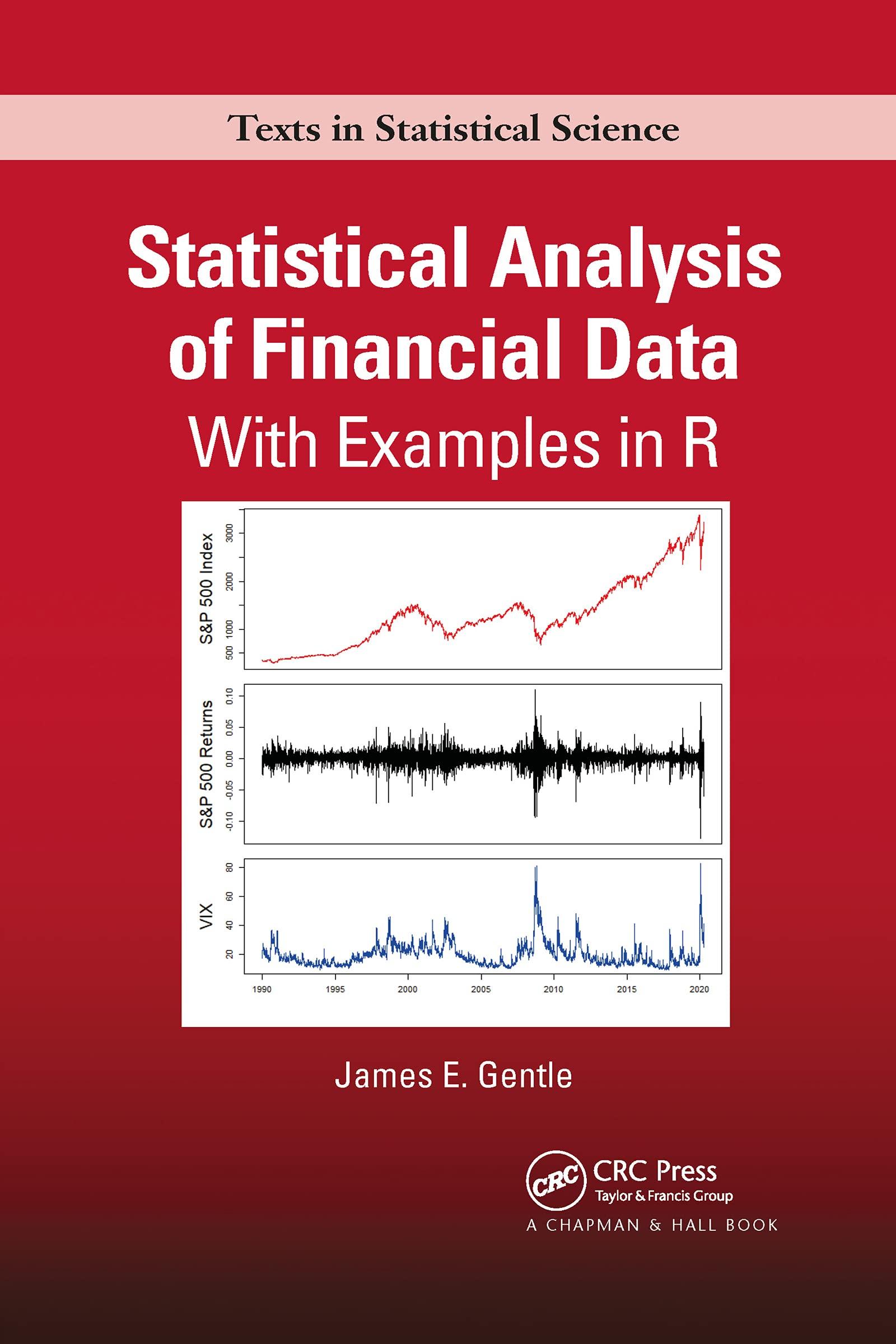Financial analysts using the common formulas such as the market model, equation (1.35), or the simple formula
Question:
Financial analysts using the common formulas such as the "market model", equation (1.35), or the simple formula for beta, equation (1.36), must make decisions about how to assign values to the terms in the formulas.
To use historical data (is there any other way?) to assign values to the terms in these formulas requires decisions: (1) which market, \(M\); (2) frequency of returns; (3) time period of the data; and (4) returns of adjusted or unadjusted prices. For some quantities, there may also be a choice of formulas. Simple returns are more commonly used in this kind of analysis, but log returns may also be used.
For the market model, we also must decide what values to use for \(R_{\mathrm{F}, t}\).
On January 11, 2019, TD Ameritrade, on its website linked from users' accounts, quoted a beta for INTC of 0.8. On the same day, E*Trade, on its website linked from users' accounts, quoted a beta for INTC of 1.3.
The difference (assuming each used a "correct" formula correctly) would be due to the formula used, which market is used, the frequency of returns, and the time period.
In this exercise, you are to consider the same issues using beta computed from the market model (1.35), \[ R_{i, t}-R_{\mathrm{F}, t}=\alpha_{i}+\beta_{i}\left(R_{\mathrm{M}, t}-R_{\mathrm{F}, t}\right)+\epsilon_{i, t} \]
For \(R_{\mathrm{F}, t}\), use the 3-Month US T-Bill rate, and recall that the data from FRED may contain missing values (see Exercise A1.7).
Compute betas for INTC based on the 18 combinations of the following - 3 benchmarks: S\&P 500 (`GSPC), Nasdaq composite (`IXIC), and VGT (an information technology ETF owned by Vanguard)
- 2 frequencies: daily returns and weekly returns;
- 3 time periods: 2018-07-01 through 2018-12-31, 2018-01-01 through 2018-12-31, and 2017-01-01 through 2018-12-31.
Compare these results with those obtained. Note, of course, that different definitions of beta were used, different types of returns were used, and further, since adjusted closes were used, the results can differ slightly due to changes in the adjustments over time.
\(R_{i, t}-R_{\mathrm{F}, t}=\alpha_i+\beta_i\left(R_{\mathrm{M}, t}-R_{\mathrm{F}, t}\right)+\epsilon_{i, t} \tag{1.35}\)
Step by Step Answer:






